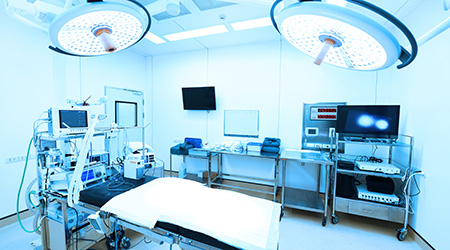The healthcare industry is rapidly changing, and hospitals face difficult decisions in order to improve patient care. UV-C technology has become more widely accepted in recent years, and more facility managers are taking notice. Managers in hospitals and other healthcare facilities must decide whether they want to be ahead of the curve. In this manufacturers roundtable, Healthcare Facilities Today talks with lighting professionals about what lighting choices mean for the future of the healthcare industry.
What do lighting choices mean for the future of the healthcare industry?
“Like many industries, UV-C technology has seen dramatic strides over the last decade. The changes have been fascinating and the adoption by the end-users has truly benefitted our society. The world is changing very rapidly, and it is great to see the UV-C manufacturing community doing its part to help. When I first got into UV-C more than seven years ago, there was still some uncertainty by the end users. It took a lot of testing and proven verification that UV-C does, in the right configurations, reduce viral, fungal, and bacterial pathogens by 99.99 percent or higher with many products. It is a proven technology that when put in the right configuration can be invaluable for any facility. The customer just needs to decide which application is best for them.”
— Bill Mauzé, President, INVZBL
“The healthcare industry should incorporate UV-C light air disinfection technology to improve indoor air quality that results in better patient care and resiliency for future pandemics and viruses.”
— Jim McMahon, Vice President Sales Americas, Heraeus Noblelight America LLC
“With the incorporation of modern controls, LED luminaires, and disinfection technologies, there is the possibility to future-proof healthcare spaces. This can include: mitigating healthcare acquired infections with pathogen reduction technologies; increasing the ability of healthcare professionals to accurately measure medication’s and observe patients with good quality LED lighting; and conserving energy and providing flexible and easy-to-use control solutions for patients and healthcare professionals in patient care settings.
There are many different UV light disinfection technology approaches and commercially available solutions that have the ability to treat both air and surfaces. It is important to remember that not all UV wavelengths are equal, and different wavelength of UV will have varying abilities in terms of effectiveness and time to inactivate viruses and bacteria. It is important to partner with a manufacturer who has the proven efficacy claims against many different pathogens that may include things like seasonal coronaviruses and Sars-CoV-2, MRSA, C. diff, E. coli and others. Data should be readily available or easily provided by a manufacturer partner.”
— Tommy Nichols, Architectural Sales Director, Acuity Brands
“UV-C systems are a cost-effective, proven, and readily available means to address all three fronts of the war against hospital-acquired infections, anti-microbial resistant threats, and emerging diseases. The variety of ways that UV-C can be applied enables engineers and operators to tailor UV-C technologies to meet desired outcomes within real-world budgets.
For example, upper-room germicidal fixtures can be installed at roughly $6-$6.50 per square foot of treated area.
Airstream disinfection systems or installing UV-C lamps in-duct is roughly $0.25-$0.30 per cfm. For a 10,000 cfm system, the installed cost would be about $2,500 and provide year-round protection. A coil efficiency system can run as little as $0.10-$0.15 per cfm.”
— Dean Saputa, Vice President Sales, UV Resources
Mackenna Moralez is the assistant editor for Healthcare Facilities Today

 Rethinking Strategies for Construction Success
Rethinking Strategies for Construction Success From Touchless to Total Performance: Healthcare Restroom Design Redefined
From Touchless to Total Performance: Healthcare Restroom Design Redefined New York State Approves $53M Construction Program at Niagara Falls Memorial Medical Center
New York State Approves $53M Construction Program at Niagara Falls Memorial Medical Center How Health Systems Are Rethinking Facilities Amid Margin Pressure
How Health Systems Are Rethinking Facilities Amid Margin Pressure Ground Broken on New Medical Office Building in Scottsdale, AZ
Ground Broken on New Medical Office Building in Scottsdale, AZ